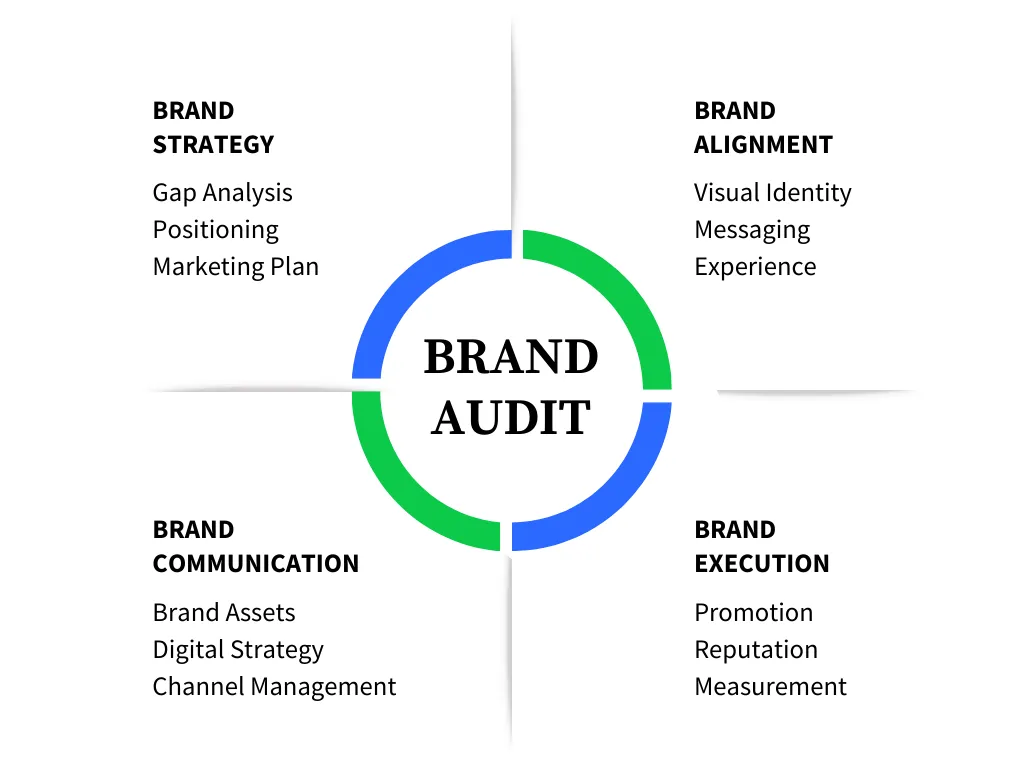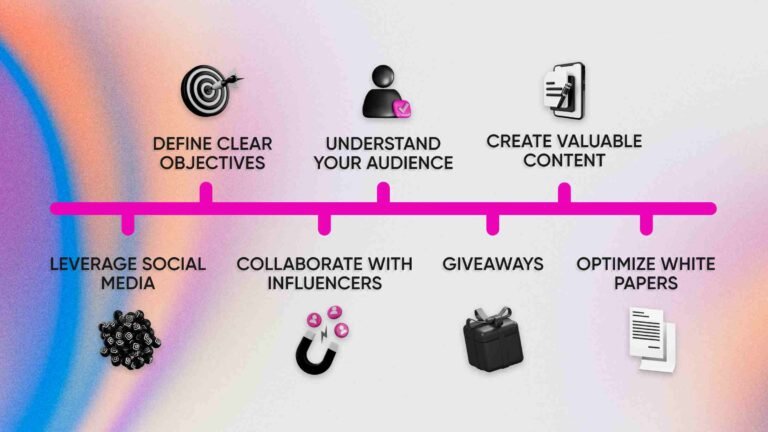How to Find Your Brand Voice: A Step-by-Step Guide
Need to find your brand voice but not sure where to start? Don’t worry; you’re not alone. Crafting a distinct and memorable brand voice can feel like trying to find a needle in a haystack—especially when your competitors are all shouting to be heard. But here’s the thing: your brand voice is more than just words. It’s your personality, your vibe, your way of making customers feel like they’re chatting with an old friend (or a trusted expert).
This guide breaks it all down for you step by step, helping you on how to find your brand voice that aligns perfectly with your mission, connects with your audience, and sets you apart in all the right ways. Whether you’re starting fresh or tweaking an existing identity, you’ll come away with a clear understanding of what your brand voice is, why it matters, and how to bring it to life across every touchpoint. Ready to dive in? Let’s get started!

Key Takeaways
- A brand voice encapsulates the tone, language, and personality that businesses use to communicate effectively with their audience, crucial for building loyalty and recognition.
- Aligning your brand voice with your company’s mission statement ensures authenticity and consistency, making connections with your audience more impactful.
- Regular audits and updates to your brand voice help maintain relevance and effectiveness, ensuring it resonates with evolving consumer expectations and market trends.
Understand What a Brand Voice Is

Understanding what a brand voice truly is marks the beginning of this journey. At its core, a brand voice is the specific tone, language, and personality used in your company’s communication. It represents the unique personality that a business develops to engage with its audience across various channels. Your company’s brand voice ‘speaks’ to its audience through social media posts, emails, or customer service interactions.
The components of a brand voice include word choice, syntax, punctuation, and style. These elements work together to create a distinctive voice that can be strong and assured, playful and light-hearted, or any combination that reflects your brand’s identity. A strong brand voice fosters connection, community, and confidence among consumers, building loyalty and encouraging repeat business.
A brand voice is vital for recognition and loyalty. Good content coupled with a strong voice forms the foundation of effective communication. The compelling brand voice remains consistent, though the tone may shift depending on the context, audience, and medium. This flexibility ensures that your own brand’s voice remains relevant and engaging in different situations. Distinctive brand voice matter. The unique brand voice is essential for maintaining this connection, as voice and tone play a crucial role in effective messaging.
Align with Your Company’s Mission Statement
Aligning the brand voice with the company’s mission statement sets the direction for its journey. The mission statement defines your company’s purpose and goals, and your brand voice should echo these aspirations. This alignment ensures that the personality traits of the brand are clearly defined and consistent. A company’s mission statement links its goals to its communication style, influencing the overall brand voice.
In today’s market, authenticity is key, with 86% of consumers prioritizing it when selecting brands to support. Reflecting the core values and mission of your company, your brand voice should be authentic and compelling to resonate with your audience.
Incorporating your mission statement into a brand voice chart can help maintain this alignment, ensuring that all communications reflect your brand’s true identity.
Audit Your Current Brand Messaging
Before you can refine your brand voice, it’s essential to understand where you currently stand. Auditing your brand messaging helps pinpoint strengths, weaknesses, and areas for improvement. This involves assessing the alignment of the current voice with your brand’s core values and mission statement to ensure consistent representation.
Review high-performing content to evaluate the effectiveness of your current brand messaging. Analyze insights from top-performing materials to determine which elements resonate with your audience. This could involve analyzing social media posts, marketing materials, and customer feedback. Understanding why certain messages resonate offers valuable clues about the emotional and practical reasons behind them.
Surveys or interviews can provide insights into how your target audience perceives your brand voice. Listing adjectives that describe your brand voice can help refine and clarify your messaging. This audit not only highlights what works but also guides you in eliminating what doesn’t, paving the way for a more effective and consistent brand voice.

Identify Your Target Audience
Understanding your target audience acts as a roadmap for your brand voice. Engagement data can reveal demographic insights about audience interaction with your brand. Accurate identification of your target audience relies on thorough market research. A well-defined target audience enhances the effectiveness of your brand messaging.
Understanding your target audience’s demographics influences how content and language are perceived and received. Understanding your audience’s preferences allows you to adjust your brand voice to better meet their needs. Aligning your brand voice with customers’ communication styles enhances rapport and effectiveness.
Regular assessments ensure your brand voice aligns with evolving customer expectations and cultural shifts. Tailoring your brand voice involves considering your audience’s communication styles, making it more relatable and engaging. This alignment helps build a stronger connection with your audience, fostering loyalty and trust.

Analyze Competitors’ Brand Voices
Benchmarking against competitors can highlight both strengths and areas for improvement in your own brand strategy. Examining competitors’ brand voices helps identify unique elements that can differentiate your brand. This involves evaluating how competitors engage with their audience, revealing effective messaging strategies.
Competitors’ tone and style can inform the development of your brand’s voice. For instance, analyzing admired brands can reveal effective communication styles that resonate with audiences. Recognizing elements of successful brand voices assists in creating a unique identity for your brand.
Competitors’ social media presence offers insights into their brand voice and audience interaction. Comparing visuals and language of competitors can reveal trends in brand communication. Inspiration can come from various sources, including social media campaigns and advertising strategies of admired brands.

Gather Inspiration from Brands You Admire

Consider influences from existing brands, celebrities, fictional characters, and public figures to shape your brand’s personality. Before crafting your own brand voice, look at role models who have perfected their tones. For example, Poppi conveys its brand voice on its website through a bright pink and yellow design that resonates with a Gen Z-friendly tone.
Admired brands can inspire and provide a solid foundation for developing your own brand voice. Analyzing their communication strategies can offer insights and help apply similar techniques to keep your brand voice compelling and memorable.
Conduct Writing Exercises
Writing exercises offer practical experimentation with different tones and styles to define your brand voice. Writing your About Us page in your brand’s voice helps articulate its personality and core values cohesively.
The ‘We’re This, Not That’ exercise, involving clear definitions of what your brand is and isn’t, is another valuable tool. These exercises provide valuable insights and clarity for establishing your brand voice.
Experimenting with tones and styles can help discover the most suitable language and compelling storytelling methods for your brand tone. This process not only refines your brand voice but also ensures it resonates with your target audience.
Create a Brand Voice Chart

A brand voice chart outlines the voice characteristics, descriptions, and examples of appropriate messaging. A brand voice template should include 3 to 5 core voice characteristics and guidance on their implementation in writing. This chart serves as a reference for maintaining consistency across all communications.
Listing and eliminating words that don’t align with your brand identity can simplify defining your brand voice. Actionable examples of language reflecting the brand’s personality should be included in effective brand voice guidelines to foster audience connection.
Sharing the brand voice chart with writers ensures consistency across all marketing materials. Clear guidelines and training are essential for maintaining brand voice consistency. A Google Sheet can serve as a useful tool for creating a brand voice template.
Develop Brand Voice Guidelines

A brand voice chart summarizes the distinct personality characteristics and guidelines defining a brand’s personality. It is suggested to convey 3 to 5 main characteristics in a brand voice. A sounds-like, doesn’t-sound-like chart outlines how a brand wants to sound versus how it doesn’t.
Dos for brand characteristics include using inclusive language and being respectful, while don’ts include exclusivity and overuse of jargon. The dos and don’ts for brand voice should detail how to sound in specific moments and tone changes across channels.
A house style guide for brand voice should include protocols for writing communication assets, dos and don’ts, and best practice samples. Public-facing guidelines ensure external contributors capture the appropriate voice. A brand voice training course for internal writers should include writing instructions for the brand.
Implement and Maintain Consistency
Consistency across all communication channels is essential for a strong brand voice to effectively convey a company’s purpose. Consistency in brand voice builds trust and recognition, enhancing audience connections. A clear and consistent brand personality enhances emotional connections with the audience.
Documenting your brand voice’s traits and characteristics in a style guide is vital for consistency. Brand voice guidelines should stress consistency, authenticity, relevance, engagement, and memorability in communication.
Monitoring engagement and feedback is crucial for adjusting and maintaining consistency in brand voice.
Regularly Review and Update Your Brand Voice

Reviewing and updating the brand voice regularly keeps it relevant and engaging as language evolves. Adapting the brand voice ensures it remains relevant and effective in the marketplace. Periodic reassessment of your brand voice is essential to adapt to changes in language and communication trends.
Adapting to market trends and shifts keeps your brand voice fresh and relatable. Staying attuned to language changes and consumer expectations keeps your brand voice engaging and effective. Ongoing review and adaptation maintain a strong, consistent brand voice that resonates with your audience.
Summary
In summary, discovering and refining your brand voice is a multifaceted process that involves understanding your brand’s personality, aligning it with your mission, auditing your current messaging, and identifying your target audience. Drawing inspiration from admired brands, conducting writing exercises, and creating a brand voice chart are crucial steps in this journey.
A strong brand voice fosters connection and loyalty, making your brand memorable and distinct in the competitive market. By regularly reviewing and updating your brand voice, you ensure it remains relevant and engaging, ultimately building stronger relationships with your audience.
Frequently Asked Questions
Disclosure: Our blog contains affiliate links to products. We may receive a commission for purchases made through these links. However, this does not impact our reviews and comparisons. We try our best to keep things fair and balanced, in order to help you make the best choice for you.






